Kale, with its incredible nutritional value and versatile nature, is a vegetable that has gained popularity in recent years. But did you know that the journey of growing kale begins with selecting the right seeds? Whether you are an avid gardener or just starting out, understanding the different types of kale seeds and how to choose the best ones can greatly impact the success of your kale-growing endeavors.
Key Takeaways:
- There are different types of kale seeds available, including organic, heirloom, and non-GMO.
- Choosing high-quality kale seeds is essential for successful kale growth.
- The variety of kale seeds you choose will determine the flavor and characteristics of your kale plants.
- Kale seeds can be purchased from various sources both online and offline.
- Selecting the right seeds is the first step towards a thriving kale garden.
The Benefits of Growing Kale
Kale is known as one of the most nutritious vegetables you can grow. It is packed with vitamins and powerful antioxidants, making it a great addition to your diet. Not only is kale nutritious, but it is also delicious and versatile in the kitchen. Kale is a hardy cool-season crop that thrives in spring and fall, even tolerating frost and snow.
Kale is a powerhouse of nutrition, offering a wide range of health benefits. It is rich in essential vitamins like vitamin A, vitamin C, and vitamin K, which contribute to overall well-being and support a healthy immune system.
Antioxidants are another crucial component of kale. These compounds help combat oxidative stress and protect the cells from damage caused by free radicals. The high antioxidant content in kale can contribute to reducing the risk of chronic diseases such as heart disease and certain cancers.
Not only is kale good for your body, but it is also a tasty ingredient that can be enjoyed in various dishes. Whether raw in salads, sautéed as a side dish, or blended into a smoothie, kale adds a unique flavor and texture to your meals. Its robust and earthy taste pairs well with a variety of ingredients, allowing you to get creative in the kitchen.
In addition to its nutritional value and delicious taste, kale is a hardy cool-season crop that thrives in different weather conditions. It is one of the few vegetables that can withstand frost and even improve in flavor after exposure to cold temperatures. This makes it an excellent choice for growing in both spring and fall, providing a steady supply of fresh kale throughout the seasons.
Choosing the Right Kale Seeds
When it comes to growing kale, selecting the right seeds is crucial for a successful harvest. By choosing high-quality kale seeds, you can ensure the best flavor and yield for your garden. Look for heirloom, organic, and non-GMO kale seeds to cultivate a sustainable and nutritious crop.
Kale seeds come in a variety of options, each with its own unique flavor and characteristics. Consider your preferences and growing conditions when making your choice. Whether you prefer the delicate taste of Red Russian kale or the robust flavor of Lacinato kale, there’s a kale variety out there for every palate.
Heirloom kale seeds are seeds that have been passed down through generations. These seeds are known for their excellent flavor and adaptability. They are open-pollinated, meaning they are pollinated by natural means such as wind or insects. The result is kale plants with distinct qualities and flavors that have stood the test of time.
Organic kale seeds are grown without the use of synthetic chemicals, pesticides, or genetically modified organisms (GMOs). Choosing organic seeds ensures that your kale will be free from harmful residues, making it a healthier option for you and the environment.
Non-GMO kale seeds are seeds that have not been genetically modified. Genetically modified organisms have been altered in a laboratory to introduce specific traits, such as resistance to pests or herbicides. By choosing non-GMO seeds, you can cultivate kale in its natural form, without any artificial modifications.
Remember, the quality of your kale seeds will directly impact the quality of your harvest. Invest in high-quality seeds to set your garden up for success.
Kale Varieties and Their Characteristics
| Kale Variety | Flavor | Leaf Texture | Growth Habit |
|---|---|---|---|
| Red Russian Kale | Mild and slightly sweet | Flat and frilly | Upright |
| Lacinato Kale | Robust and earthy | Ruffled and wrinkled | Tall and upright |
| Blue Curled Scotch Kale | Peppery and bold | Curled and fringed | Compact |
“Choosing the right kale seeds is like laying the foundation for your garden’s success.” – Mark Simmons, Organic Gardening Expert
Planting Kale Seeds
Planting kale seeds is an essential step in growing your own kale. Whether you’re planting in the spring or fall, it’s important to choose the right time to ensure optimal growth and flavor. Here are some key tips for successfully planting kale seeds:
Timing
The timing of planting kale seeds depends on your climate. In general, kale can be planted in both spring and fall, but the specific timing may vary. In cooler regions, spring planting is recommended, while in warmer climates, fall planting is ideal. By aligning the planting time with your local climate, you can provide the best conditions for kale to thrive.
Soil Preparation
Preparing the soil before planting is crucial for the success of your kale crop. Start by clearing the area of any weeds or debris. Kale thrives in well-drained soil, so ensure that the soil is properly loosened. Add compost and nitrogen-rich amendments to provide the necessary nutrients for healthy growth. This step will create an ideal environment for your kale seeds to germinate and grow.
Planting Depth and Spacing
When it comes to planting kale seeds, the depth and spacing play a significant role in ensuring proper growth and development. The general rule of thumb for planting kale seeds is to sow them approximately ¼ to ½ inch deep. Be mindful of the specific instructions provided with each variety of kale seeds as planting depths may slightly vary. Maintain proper spacing between the seeds to allow enough room for each plant to grow and receive adequate sunlight.
Recommended Planting Depths and Spacings for Popular Kale Varieties
| Variety | Planting Depth | Spacing |
|---|---|---|
| Red Russian Kale | ¼ inch | 12-18 inches |
| Lacinato Kale | ½ inch | 12-18 inches |
| Blue Curled Scotch Kale | ¼ inch | 12-18 inches |
Note: These are general guidelines. Refer to the seed packet or specific instructions for each variety for accurate planting depths and spacings.
By following these planting tips, you’ll create the ideal conditions for your kale seeds to thrive. The next section will cover essential tips and techniques for growing kale, ensuring a successful and bountiful harvest.
Growing Kale
Once the kale seeds have been planted, it is important to provide the right growing conditions for optimal growth. Kale is a resilient vegetable that thrives in various climates, making it a popular choice for home gardeners.
To ensure successful cultivation of kale, consider the following factors:
- Sunlight: Kale prefers full sun, which means it should receive at least six hours of direct sunlight per day. However, it can also tolerate partial shade, making it suitable for gardens with limited sun exposure.
- Soil: Well-drained soil is essential for kale’s growth. Prior to planting, test the soil pH to ensure it falls within the range of 6.0 to 7.5, which is optimal for kale. Amend the soil with organic matter, such as compost, to improve its fertility and drainage.
- Water: Regular watering is crucial for kale’s growth. Keep the soil consistently moist, but not waterlogged, to prevent root rot. Water deeply once or twice a week, depending on weather conditions.
- Fertilization: Kale is a leafy vegetable that benefits from regular fertilization. Apply a balanced organic fertilizer, such as 10-10-10, every three to four weeks to provide essential nutrients for healthy growth.
- Mulching: Mulching the soil around kale plants helps retain moisture, suppress weed growth, and regulate soil temperature. Apply a layer of organic mulch, such as straw or shredded leaves, to keep the soil cool and moist.
- Temperature and Frost: Kale is a cold-tolerant vegetable that thrives in cool weather. It can withstand temperatures as low as 20°F (-6°C) and even becomes sweeter after being exposed to light frost. However, extreme cold and prolonged frost can damage the leaves. Protect kale plants during frost periods by covering them with row covers or cloths.
Remember to provide adequate spacing between kale plants to allow for air circulation and prevent the spread of diseases.
By following these guidelines and providing the right growing conditions, you can enjoy a bountiful harvest of delicious and nutritious kale.
Harvesting Kale
When it comes to harvesting kale, timing is crucial. The leaves should reach the desired size before you start picking them. A good rule of thumb is when the leaves are about the size of your hand. This ensures that the kale has reached maturity and developed its maximum flavor.
To harvest kale, simply pick the outer leaves. This allows the plant to continue growing and maintain its productivity. By picking the outer leaves, you encourage the growth of new leaves from the center of the plant, ensuring a continuous supply of fresh kale throughout the season.
One of the great things about kale is its ability to withstand frost. In fact, kale becomes even sweeter after a light frost. However, if you’re expecting a heavy frost or freezing temperatures, it’s best to harvest the entire plant to prevent damage.
To extend your harvest and protect your kale from frost, you can use row covers or makeshift covers. These covers help create a barrier between the plants and the cold weather, allowing you to enjoy fresh kale even as the temperature drops.
After harvesting your kale, it’s important to store it properly to maintain its freshness. Place the freshly harvested kale in a loose plastic bag and store it in the refrigerator. This helps retain the moisture and freshness of the leaves. Stored properly, kale can last up to one week in the refrigerator.
Harvesting Kale Tips:
- Harvest kale when the leaves are about the size of your hand.
- Pick the outer leaves to maintain plant productivity.
- Kale can withstand frost and becomes sweeter after a light frost.
- Protect kale from heavy frost by harvesting the entire plant.
- Use row covers or makeshift covers to extend the harvest and protect against frost.
- Store harvested kale in a loose plastic bag in the refrigerator for up to one week.
By following these harvesting tips, you can enjoy the full flavor and nutritional benefits of your homegrown kale throughout the season.
Common Pests and Diseases of Kale
While kale is generally a hardy and disease-resistant plant, it may be susceptible to certain pests and diseases. It’s important to be aware of these common kale pests and diseases, as well as the prevention and control measures to keep your kale plants healthy and thriving.
Kale Pests
Kale plants can attract various pests that can affect their growth and overall health. Some of the most common pests that may infest kale include:
- Aphids: These tiny insects can suck sap from kale leaves, causing wilting and stunted growth.
- Cabbageworms: The larvae of the cabbage white butterfly, cabbageworms can chew holes in kale leaves, leaving them ragged and damaged.
- Flea Beetles: These small jumping insects can chew tiny holes in kale leaves, giving them a speckled appearance and affecting plant growth.
To prevent and control these pests, you can use several measures:
- Companion planting: Planting kale alongside pest-repellent plants like mint or marigold can deter pests from infesting your kale plants.
- Insecticidal soap: Applying insecticidal soap according to the manufacturer’s instructions can effectively control aphids, cabbageworms, and flea beetles on kale.
Kale Diseases
Kale may also encounter certain diseases that can hinder its growth and productivity. Two common diseases of kale are:
- Black Rot: Black rot is a bacterial disease that causes yellowing, wilting, and blackening of the veins and leaf margins of kale plants.
- Downy Mildew: Downy mildew is a fungal disease that appears as yellow patches on the upper surface of kale leaves, with white or grayish-purple downy growth on the undersides.
Preventing these diseases involves practicing good sanitation and implementing proper crop rotation:
Proper sanitation includes removing and destroying infected plant debris, as well as disinfecting gardening tools to prevent the spread of diseases. Crop rotation is essential, as moving kale to a different location each year can help disrupt disease cycles and reduce the risk of infections.
| Disease | Symptoms | Prevention |
|---|---|---|
| Black Rot | Yellowing, wilting, blackening of leaf veins and margins | – Remove and destroy infected plant debris – Disinfect gardening tools – Practice crop rotation |
| Downy Mildew | Yellow patches on upper leaf surface, downy growth on undersides | – Remove and destroy infected plant debris – Disinfect gardening tools – Practice crop rotation |
By understanding and implementing these prevention and control measures, you can ensure the health and vitality of your kale plants, keeping them free from pests and diseases.
Tips and Tricks for Growing Kale
When it comes to growing kale, there are a few tips and tricks that can help ensure successful growth and a bountiful harvest. Whether you’re a seasoned gardener or just starting out, these techniques will help you cultivate healthy, vibrant kale plants in your own backyard.
Mulching for Healthy Soil
One of the key factors in successful kale growth is maintaining healthy soil. Mulching is an effective technique that helps retain moisture, control weeds, and regulate soil temperature. Apply a layer of organic mulch around your kale plants to keep the soil moist and cool, while also providing a barrier against weed growth. This will create an ideal environment for your kale to thrive.
Companion Planting for Pest Control
Companion planting is a natural and effective way to deter pests and promote healthy plant growth. By strategically planting certain crops alongside your kale, you can create a harmonious ecosystem that helps protect your kale from common pests. Some great companion plants for kale include herbs like dill and chamomile, as well as aromatic flowers like marigolds. These plants will attract beneficial insects that prey on pests, keeping your kale plants safe and thriving.
Proper Spacing for Air Circulation
Ensuring proper spacing between your kale plants is essential for promoting good air circulation and preventing diseases. Kale plants should be spaced about 18 to 24 inches apart, allowing enough room for the leaves to grow without overcrowding. Proper spacing also prevents the spread of diseases and minimizes competition for sunlight, water, and nutrients.
Protection from Animal Intruders
Kale can be a tasty treat for animals such as rabbits and deer, so it’s important to protect your plants from these potential intruders. Use fencing or netting to create a barrier around your kale garden, preventing animals from accessing the plants. You can also try using organic deterrents such as garlic spray or predator urine to discourage animals from approaching your kale.
By following these tips and tricks, you’ll be well on your way to growing beautiful, healthy kale plants that will delight both your taste buds and your eyes!
Saving Kale Seeds
When it comes to growing kale, saving seeds allows you to preserve and propagate your favorite varieties from one season to the next. Follow these seed-saving instructions to ensure a successful harvest of kale seeds.
Allowing Kale to Go to Seed
In order to save kale seeds, it’s important to let a few plants go to seed rather than harvesting them for consumption. Allow the kale plants to mature and form seed pods.
“By allowing the kale plants to go to seed, you can ensure a sustainable source of seeds for future plantings.”
Harvesting Kale Seed Pods
Once the seed pods have dried completely on the plant, harvest them carefully. Gently remove the seed pods from the stems and place them in a clean container.
Cross-Pollination Considerations
Cross-pollination can occur if you are growing multiple varieties of kale in close proximity. To maintain the purity of each variety, separate the plants by a sufficient distance or manually isolate the flowers using mesh bags.
Storing Kale Seed Pods
Proper storage is key to preserving the viability of kale seeds. Place the seed pods in a cool and dry location, such as an airtight container in a dark pantry or refrigerator. This helps maintain their quality until you’re ready to plant them.
Drying Seed Pods Prior to Storage
Before storing the seed pods, it’s essential to ensure that they are completely dry. Place the pods in a well-ventilated area and allow them to air dry for a minimum of one week. This ensures that any remaining moisture is eliminated, preventing mold or degradation.
Steps for Saving Kale Seeds
| Step | Description |
|---|---|
| Allow kale plants to go to seed | Don’t harvest the entire plant; let some plants mature |
| Harvest dried seed pods | Gently remove seed pods once dry |
| Consider cross-pollination | Avoid mixing varieties to preserve individual characteristics |
| Store seed pods | Keep in a cool, dry place until ready to use |
| Dry seed pods prior to storage | Air dry for at least one week to remove moisture |
Companion Planting with Kale
In addition to being a nutritious and easy-to-grow vegetable, kale can also benefit from companion planting with certain crops. By strategically planting compatible vegetables alongside your kale, you can promote healthier growth and maximize your garden’s productivity. When planning your companion planting approach with kale, consider incorporating beets, celery, onions, and potatoes as beneficial companions.
Beets make excellent companion plants for kale. Not only do they thrive in similar growing conditions, but they also have minimal competing root systems. Planting beets alongside kale can help deter pests and attract beneficial insects that can control common kale pests.
Celery is another great companion plant for kale. Celery’s tall, upright growth can provide shade and protection for kale plants, helping to conserve moisture and regulate soil temperatures. Additionally, celery’s strong scent may help repel certain pests that can damage kale leaves.
Onions, with their pungent aroma, can help deter pests such as aphids and cabbage worms, which are common enemies of kale. By planting onions near your kale, you can naturally ward off these pests and promote healthier growth for both plants.
Potatoes can also make excellent companions for kale. When planted together, these two vegetables can benefit from a symbiotic relationship. As kale grows, it provides shade and protection for young potato plants, while the potatoes’ dense foliage can help shade the kale, protecting it from intense sunlight.
While there are many suitable companion plants for kale, it’s important to be cautious of certain combinations that may hinder kale’s growth. Avoid planting kale with beans, strawberries, or tomatoes, as these crops may compete for nutrients and overshadow the kale plants. This can lead to stunted growth and decreased productivity for your kale.
Companion Planting for Kale: A Summary
| Companion Plants | Benefit |
|---|---|
| Beets | Deters pests and attracts beneficial insects |
| Celery | Provides shade and protection |
| Onions | Deters pests with their strong aroma |
| Potatoes | Provides shade and protection in return for benefitting from kale |
By incorporating companion planting into your kale-growing strategy, you can create a harmonious garden ecosystem that promotes the health and productivity of your kale plants. Remember to avoid planting kale alongside beans, strawberries, or tomatoes to ensure optimal growth and performance. Experiment with different companion plants to find the combination that works best for your garden.
Heirloom Varieties of Kale
When it comes to kale, there is a wide selection of heirloom varieties to choose from. Each heirloom kale variety offers its own unique flavors and characteristics, allowing you to discover the kale that suits your palate the best. Whether you prefer a mild and tender kale or a bold and hearty one, there is an heirloom variety out there for you to enjoy.
Here are some popular heirloom kale varieties to consider:
1. Red Russian Kale
Red Russian kale is known for its strikingly beautiful reddish-purple leaves, making it not only a delicious addition to your meals but also an attractive addition to your garden. This variety has a mild flavor with a hint of sweetness, making it a versatile choice for salads, sautés, and smoothies. Red Russian kale is also packed with nutrients, including vitamins A, C, and K.
2. Lacinato Kale
Lacinato kale, also known as dinosaur kale or Tuscan kale, is a favorite among kale enthusiasts for its dark green, wrinkled leaves and earthy flavor. This variety has a slightly sweeter taste compared to other kale varieties, with a hint of nuttiness. Lacinato kale is great for cooking, as its leaves hold up well to heat. It is commonly used in soups, stews, and pasta dishes.
3. Blue Curled Scotch Kale
Blue Curled Scotch kale is a curly leaf variety that adds a beautiful texture to any dish. Its leaves are a vibrant blue-green color, and the plant itself has a compact and bushy growth habit. This kale variety has a slightly peppery flavor and tender leaves, making it a great choice for salads, stir-fries, and even kale chips. Blue Curled Scotch kale is rich in vitamins A, C, and K.
Whether you’re a kale connoisseur or new to growing kale, exploring heirloom varieties like Red Russian kale, Lacinato kale, and Blue Curled Scotch kale is a great way to broaden your culinary horizons and discover new flavors.
So go ahead, experiment with different heirloom kale varieties and find your favorite!
Comparison of Heirloom Kale Varieties
| Variety | Flavor | Color | Usage |
|---|---|---|---|
| Red Russian kale | Mild and slightly sweet | Reddish-purple | Salads, sautés, smoothies |
| Lacinato kale | Earthy and slightly sweet | Dark green | Soups, stews, pasta dishes |
| Blue Curled Scotch kale | Peppery | Blue-green | Salads, stir-fries, kale chips |
Conclusion
Growing kale from seeds can be a rewarding and enjoyable experience. With the right seeds and proper care, you can cultivate a bountiful harvest of nutritious and delicious kale right in your own backyard. Whether you are a beginner gardener or an experienced grower, kale is a fantastic addition to any garden.
Kale is renowned for its numerous health benefits, packed with essential vitamins and powerful antioxidants. By incorporating kale into your diet, you can enhance your overall well-being and contribute to a healthier lifestyle. Growing your own kale allows you to have access to fresh, pesticide-free produce that is brimming with nutrients.
With a wide variety of kale seeds available, you can choose from heirloom, organic, and non-GMO options to suit your preferences. Whether you prefer the robust and flavorful Red Russian kale, the tender and nutty Lacinato kale, or the beautifully curled Blue Curled Scotch kale, there is a kale variety for everyone.
So why wait? Take advantage of the benefits of kale by growing it yourself. It is an easy-to-grow vegetable that thrives in both spring and fall, tolerating even frost and snow. Get started with kale seeds and enjoy the satisfaction of nurturing your plants and indulging in the rich flavors and health benefits of this remarkable leafy green.

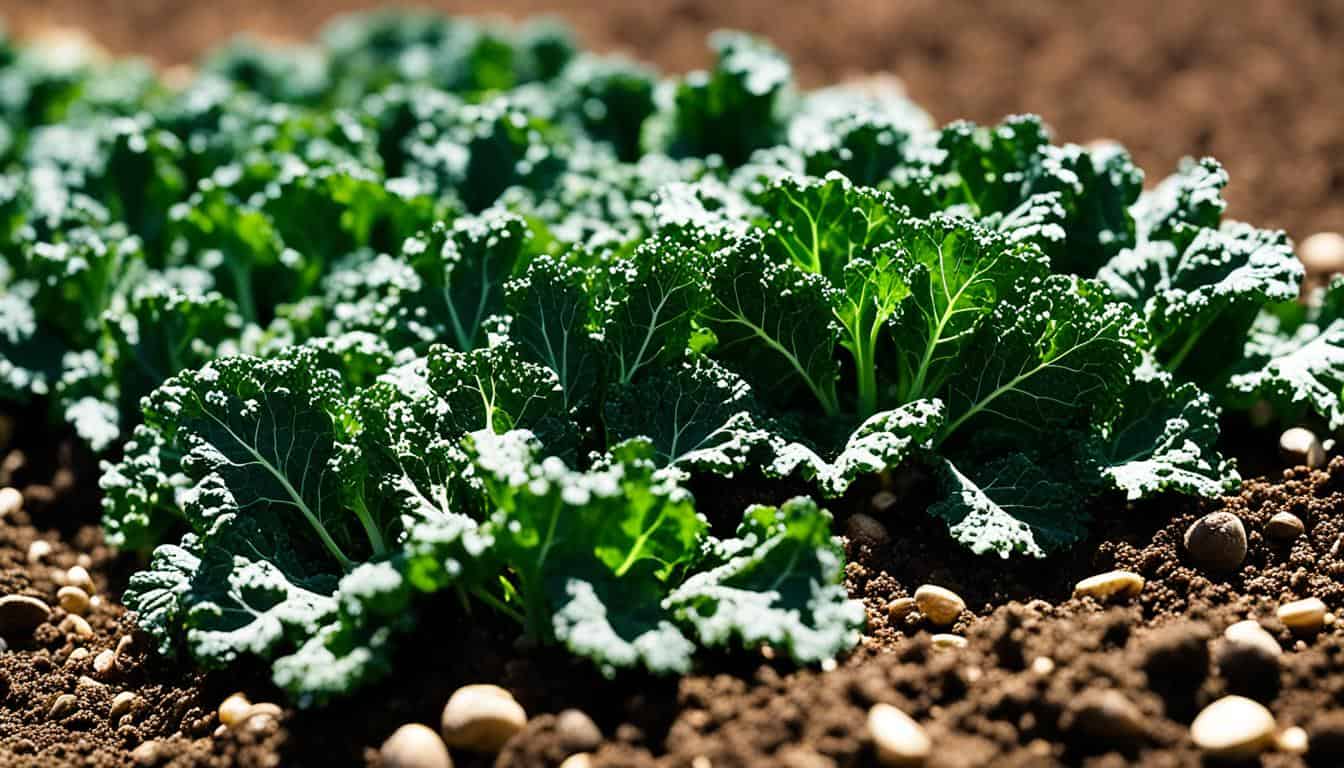
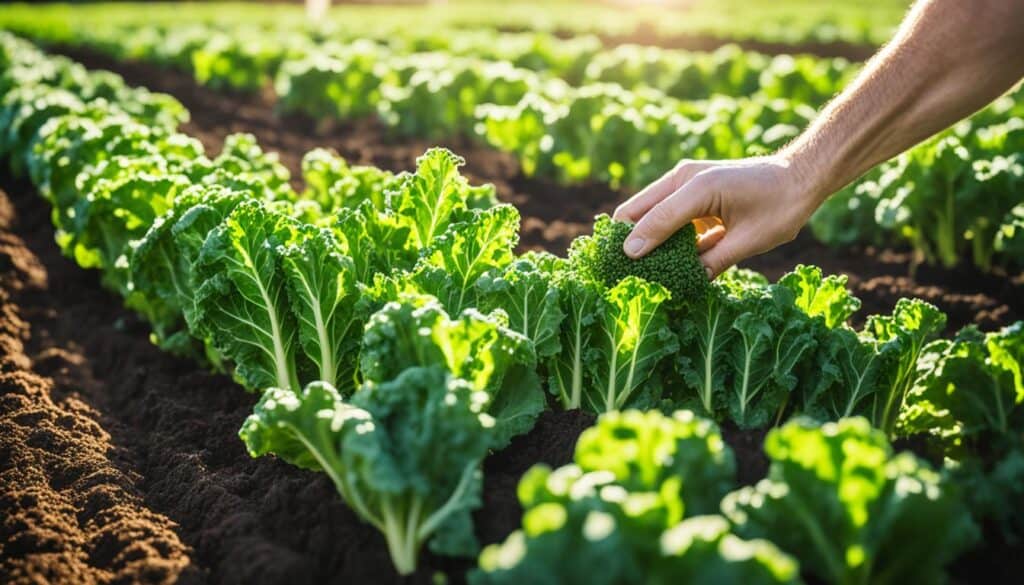

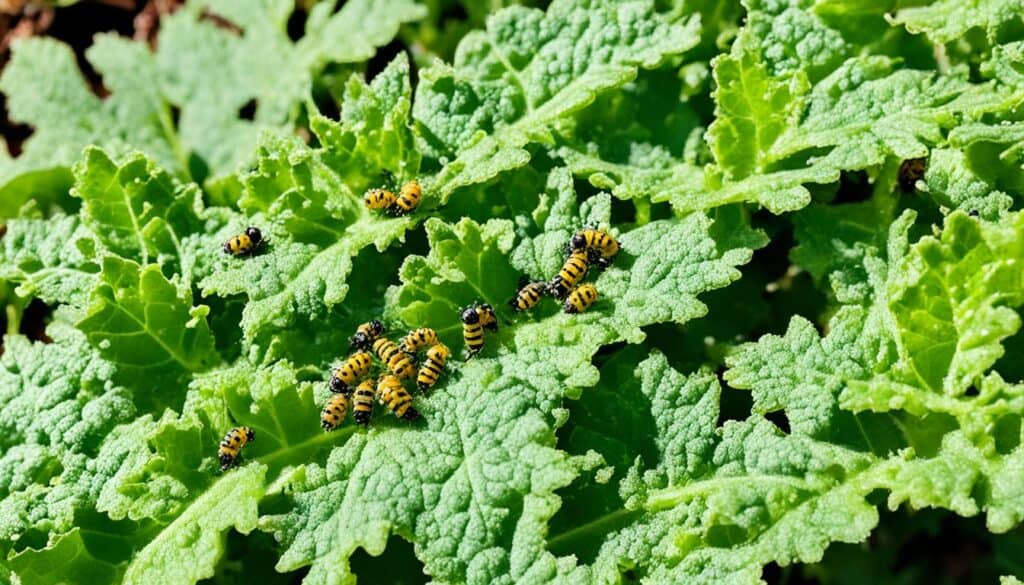
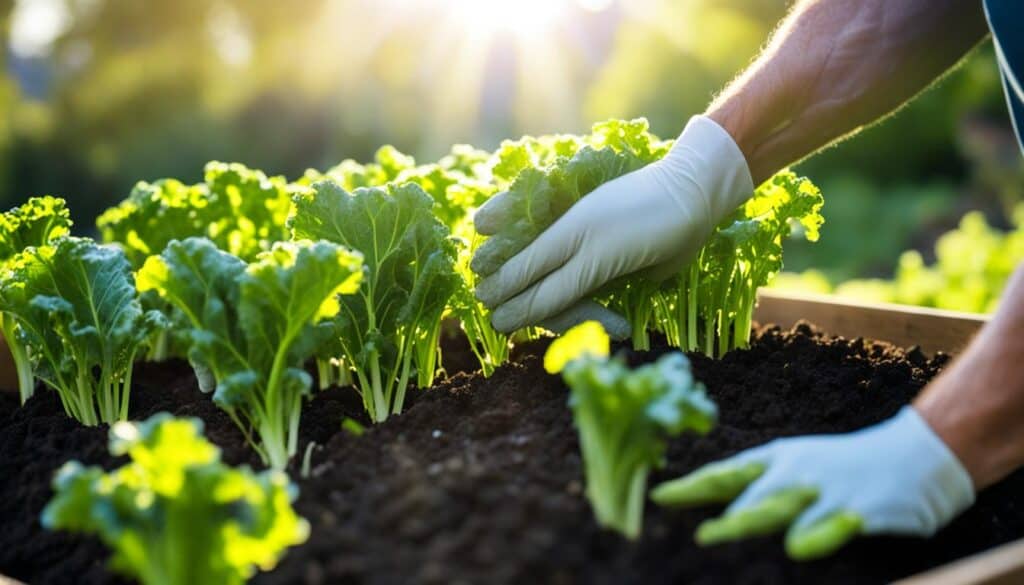
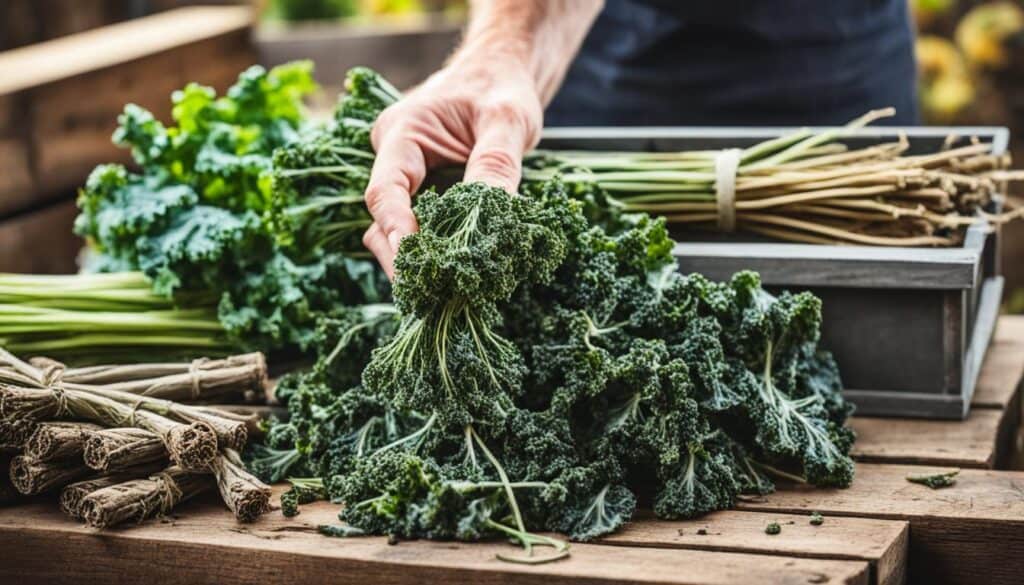



Leave a Reply